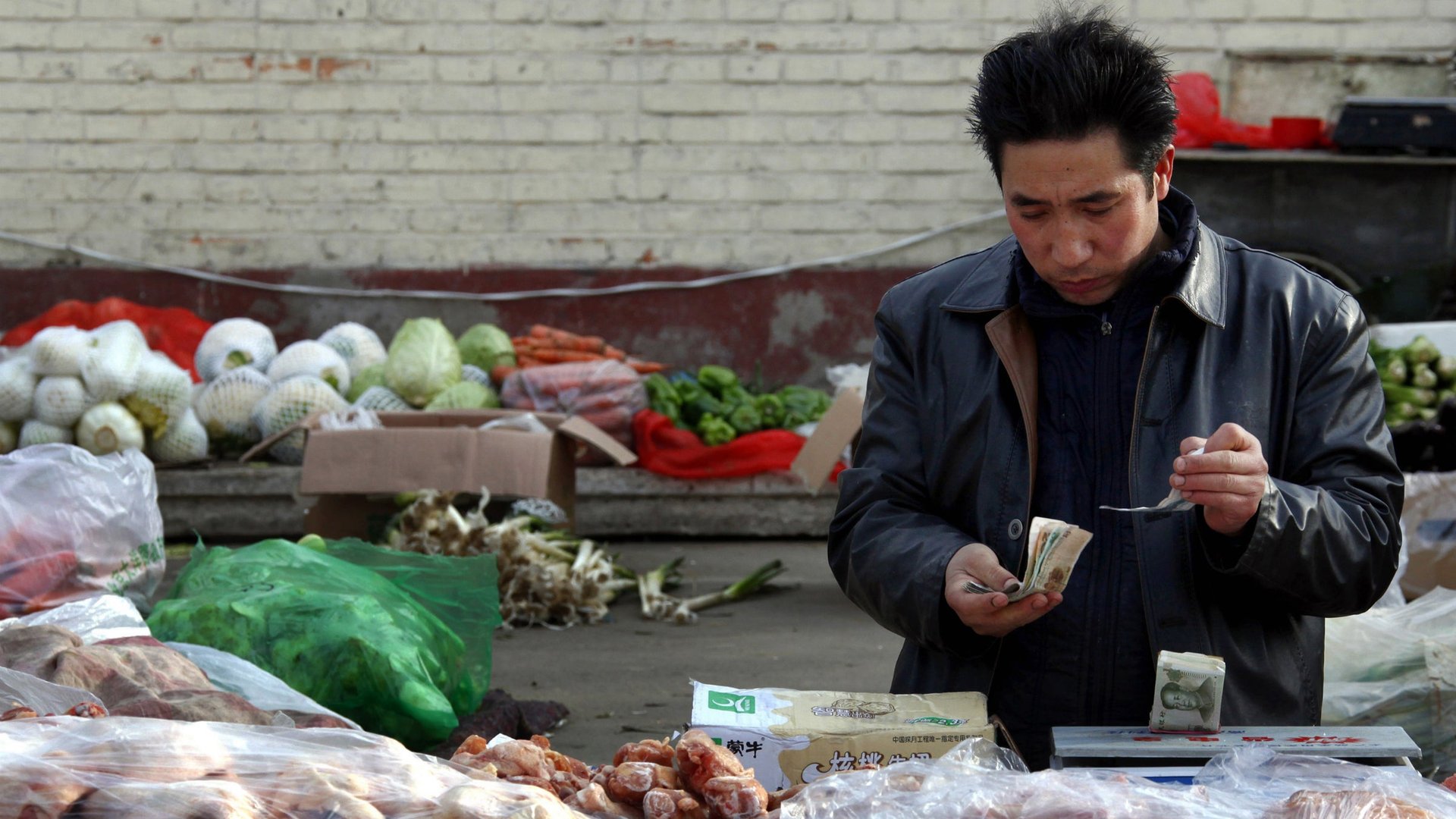China’s economy grew in 2020, but only the rich are “revenge spending”
China today reported 2.3% growth in GDP last year, making it the first and probably only major country whose economy expanded in 2020.


China today reported 2.3% growth in GDP last year, making it the first and probably only major country whose economy expanded in 2020.
But a marked decrease in consumer spending, contrasted against a resilient and robust luxury goods market, offers a glimpse into how uneven the country’s recovery has been.
Despite seeing its first GDP contraction in nearly 30 years in the first quarter of last year, China appeared to bounce back relatively quickly from the coronavirus pandemic. Thanks to Beijing’s draconian measures to contain the virus, its focus on reviving sectors like infrastructure, and strong overseas demand for Chinese goods, the country has had a V-shaped recovery since the middle of last year, and reported 6.5% GDP growth in the fourth quarter. Although China’s GDP growth in 2020 is the slowest the country has had in over 40 years, it still beat analyst expectations of 2.1%.
But the pandemic has set back China’s efforts to shift from an export-focused economy to a more consumption-driven one. Growth in retail sales in particular has been slow, falling 3.9% last year, the first contraction (link in Chinese) of this category since 1969.
Spending has picked up since August, and expanded by 4.6% in December year-on-year, a seemingly promising sign. But a recent resurgence of coronavirus cases and newly imposed lockdowns in northern Chinese cities could lead to another muted Chinese New Year next month, potentially resulting in another dip. During the Chinese festival last year in January, hundreds of millions of Chinese residents were put under strict lockdowns and had to cancel their family gatherings, resulting in a 20% plunge in retail sales for the first two months of the year. Restaurant sales will be a particularly important indicator to watch out for over this period.
“The impact from the pandemic has been reduced, but it hasn’t gone completely this year,” says Terry Hong, a senior vice president at Chinese brokerage firm Guotai Junan International. “Consumption this year could recover some of its lost ground, but I don’t expect to see a deep rebound.”
On the other side of the spectrum are China’s rich, who appear to be engaging in ”revenge spending,” a trending phrase on the Chinese internet earlier last year which captured the government’s hope that post-pandemic consumption would help reboot the economy. Exports of Swiss watches to mainland China, for example, increased 17% between January and November last year, while the other top 20 markets for watchmakers saw a decline during the period, according to the Federation of the Swiss Watch Industry.
China’s luxury goods market appears to be “unstoppable,” and is estimated to have grown by nearly 50% last year, helping the country to double its share in the global market to 20%, according to a report from consultancy Bain & Company. “The coronavirus hasn’t impacted the high-income group that much,” said Hong. “And because of the travel restrictions globally, lots of the group’s demand for luxury goods has shifted to the domestic market, and has led to a quick rebound in the sector.”
The robust demand from China’s affluent population, paired with sluggish spending by mass consumers, offers a window into the country’s worsening wealth gap. China had a record number of billionaires last year, thanks to new company listings and stock market booms. At the same time, the government chose to crop up companies with cash incentives rather than providing relief checks for families. The result was greater financial instability, particularly for poorer families, according to a survey by fintech giant Ant Group and China’s Southwestern University of Economics and Finance.
Traces of discontent about widening inequality have started to appear. On Weibo, a post by the state-owned People’s Daily celebrating economic growth today sparked complaints about the rising price of goods and stagnating salary levels. “The rich are becoming richer, while the poor getting poorer,” said one user in a now-deleted post. “The ‘V-shaped’ line doesn’t carry much meaning for us.”